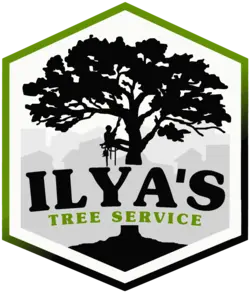Identifying the signs of disease in trees is crucial for maintaining their health and preventing potential damage to your property. Recognizing the symptoms early can lead to a more successful treatment and save the tree’s life. Here are some common indicators of tree disease and steps to take if you suspect your tree is infected.
Common Signs of Tree Disease
- Unusual Leaf Discolorations or Patterns:
- Leaves that display unusual spotting, blight, or color changes beyond typical seasonal variations may indicate a disease.
Bark Abnormalities:
- Look for bark that is peeling, cracking, or displaying unusual bumps. Cankers—sunken, dead areas on branches or trunks—often signal a disease.
- Fungal Growth:
- The presence of mushrooms or other fungal growths around the tree’s base or on the tree itself can be a sign of internal decay.
- Dieback:
- This occurs when the tips of branches begin dying back from the outermost points inward and is often caused by fungal infection or root disease.
- Wilting or Drooping Leaves:
- If your tree’s leaves start wilting or drooping without an apparent reason, such as lack of water, it could be a sign of root or vascular disease.
- Premature Leaf Drop:
- Trees losing leaves earlier than the typical autumn shedding may be struggling with a health issue.
Steps to Take if You Suspect Tree Disease
- Assess the Situation:
- Take a thorough look at the tree from all angles. Note any symptoms and their locations as this information is vital for diagnosis.
- Consult a Professional:
- It’s essential to get an expert opinion. arborists can provide a proper diagnosis and suggest the best treatment options. They have the tools and knowledge to assess the tree comprehensively.
- Follow Treatment Recommendations:
- Depending on the disease, treatment may involve pruning infected areas, applying fungicides, adjusting watering practices, or in some cases, removing the tree to prevent the spread of disease to nearby plants.
- Monitor the Tree:
- After treatment, keep an eye on the tree’s recovery. Look for improvements in leaf health and new growth, which are signs of recovery.
- Prevent Future Issues:
- Implement preventive measures such as proper watering, fertilizing, and pruning techniques to enhance your tree’s resistance to disease.
Conclusion
Knowing the signs of tree disease and taking swift action are crucial to managing the health of your trees effectively. Early detection and professional care can make the difference between saving or losing a valuable part of your landscape.

Have specific questions?
Our team is here to help!
We are eager to share our knowledge and to help ensure the health and safety of your trees. If you have specific questions or need personalized advice, don’t hesitate to reach out
